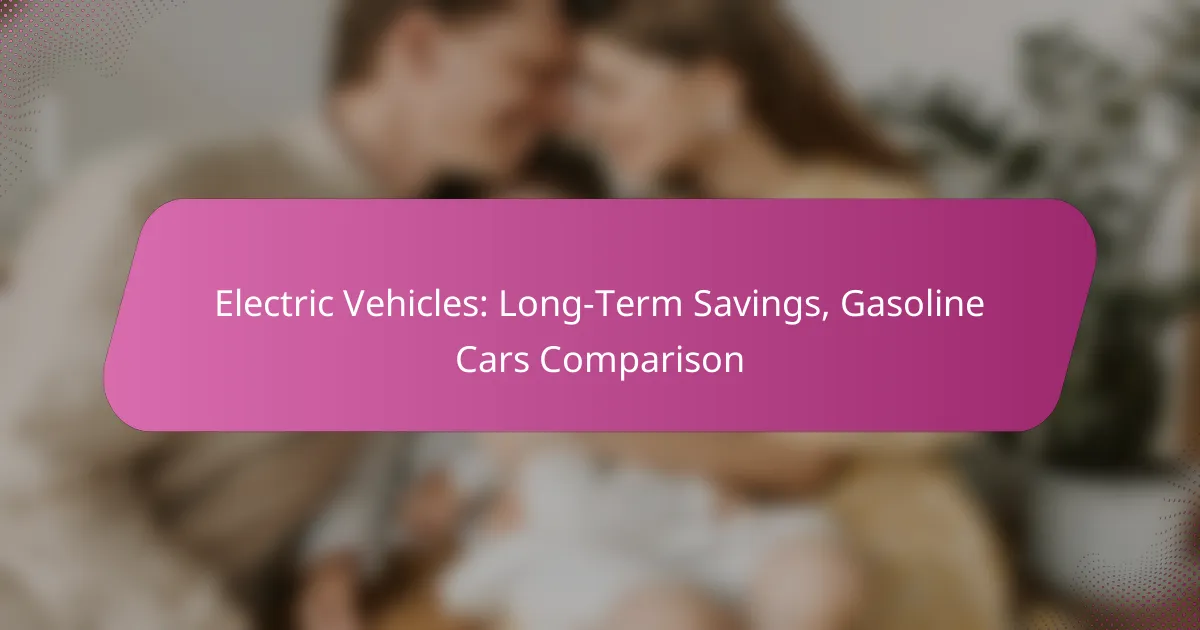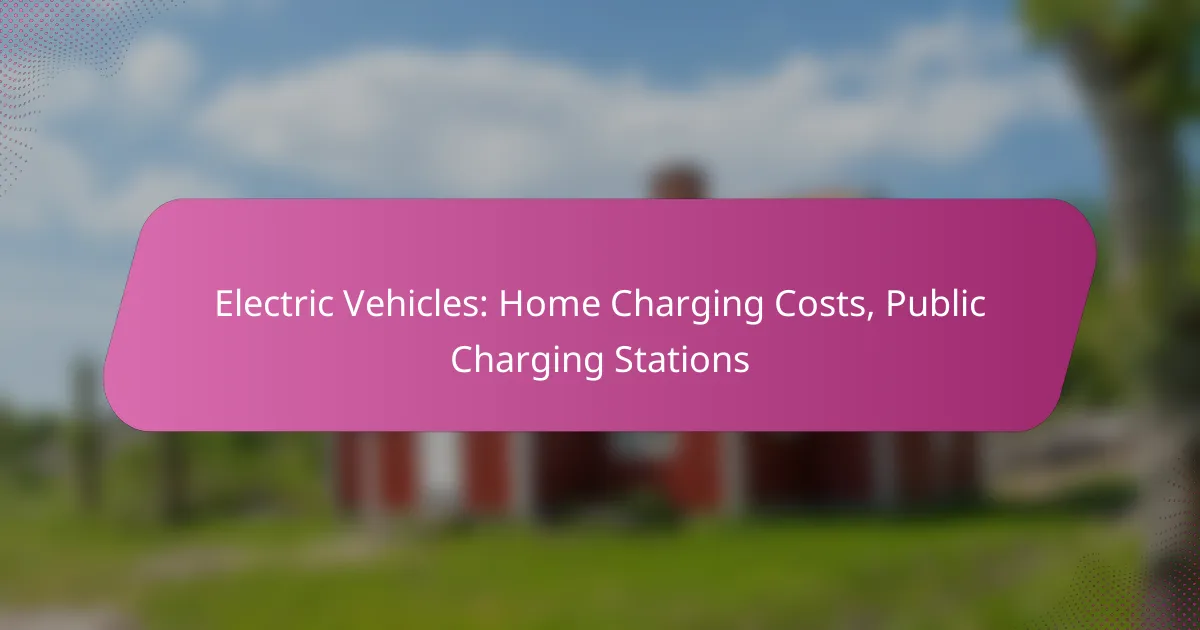Electric vehicles (EVs) present a compelling case for long-term savings when compared to traditional gasoline cars. Although the initial purchase price of EVs may be higher, their lower operational costs, reduced maintenance needs, and potential financial incentives can lead to significant savings over time. As consumers increasingly consider the total cost of ownership, the economic advantages of EVs become more apparent.
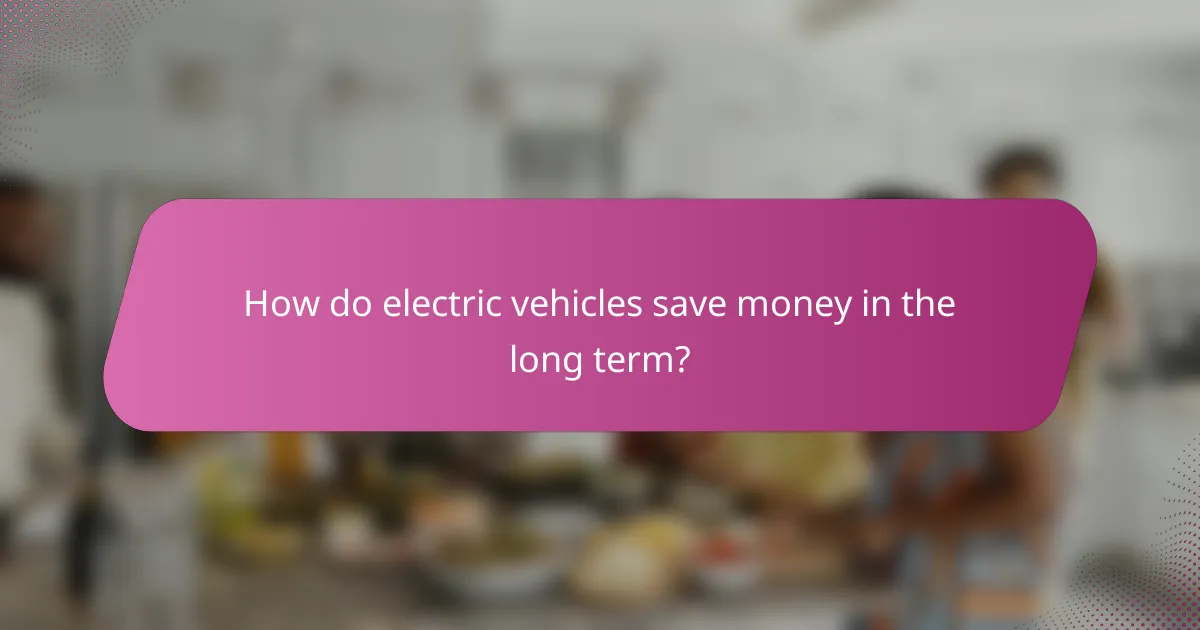
How do electric vehicles save money in the long term?
Electric vehicles (EVs) can lead to significant long-term savings compared to gasoline cars through lower operational costs, reduced maintenance needs, and available financial incentives. Over time, these factors contribute to a more economical ownership experience.
Lower fuel costs
One of the primary ways electric vehicles save money is through lower fuel costs. Charging an EV typically costs less than refueling a gasoline car, especially when utilizing home charging during off-peak hours. For instance, the average cost of electricity in the U.S. is often significantly lower per mile than gasoline prices, leading to savings that can accumulate over years.
Additionally, many EV owners can take advantage of public charging stations that offer free or discounted charging options, further enhancing savings. Depending on local electricity rates, drivers might find that their monthly fuel expenses drop to a fraction of what they would spend on gasoline.
Reduced maintenance expenses
Electric vehicles generally incur lower maintenance costs compared to gasoline cars due to fewer moving parts and no need for oil changes. EVs do not have traditional engines, which means they avoid many common issues associated with combustion engines, such as exhaust system repairs or engine overhauls.
For example, brake wear is often reduced in EVs because of regenerative braking systems, which can extend the lifespan of brake components. Overall, EV owners can expect to spend less on routine maintenance, often saving hundreds of dollars annually.
Tax incentives and rebates
Many governments offer tax incentives and rebates to encourage the adoption of electric vehicles, which can significantly lower the initial purchase price. In the U.S., for instance, federal tax credits can provide savings of several thousand dollars, depending on the model and eligibility criteria.
Additionally, some states and municipalities offer their own incentives, such as rebates, reduced registration fees, or access to carpool lanes. These financial benefits can make EVs more affordable upfront, contributing to long-term savings as well.
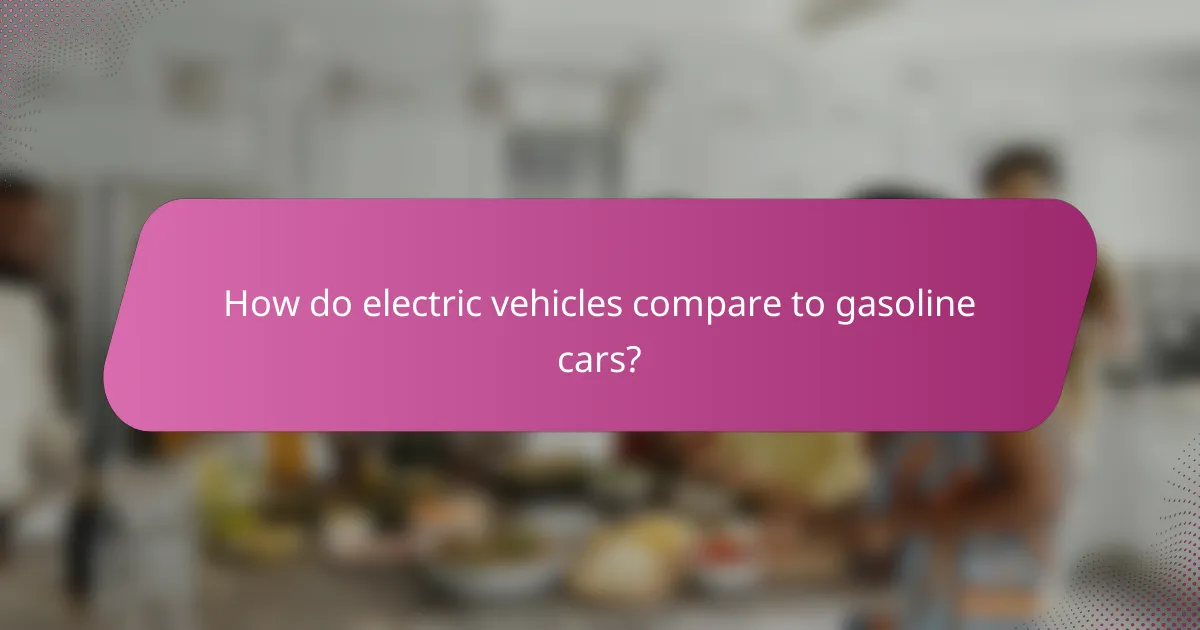
How do electric vehicles compare to gasoline cars?
Electric vehicles (EVs) generally offer lower long-term costs and environmental benefits compared to gasoline cars. While initial purchase prices for EVs may be higher, savings on fuel and maintenance can offset these costs over time.
Cost of ownership analysis
The cost of ownership for electric vehicles typically includes the purchase price, charging costs, maintenance, and potential tax incentives. While EVs can have higher upfront costs, they often qualify for government rebates that can significantly reduce the initial expense.
Operating costs for EVs are generally lower, with charging prices averaging around $0.10 to $0.30 per kilowatt-hour in the U.S., compared to gasoline prices that can fluctuate widely. Maintenance costs are also reduced due to fewer moving parts and no need for oil changes, often leading to savings of hundreds of dollars annually.
Environmental impact comparison
Electric vehicles produce zero tailpipe emissions, significantly reducing air pollution compared to gasoline cars. The overall environmental impact of EVs depends on the energy source used for electricity generation, with renewable sources providing the most significant benefits.
Additionally, many regions are implementing stricter emissions regulations, making EVs increasingly favorable. Transitioning to electric vehicles can help meet climate goals and reduce reliance on fossil fuels, contributing to a more sustainable future.
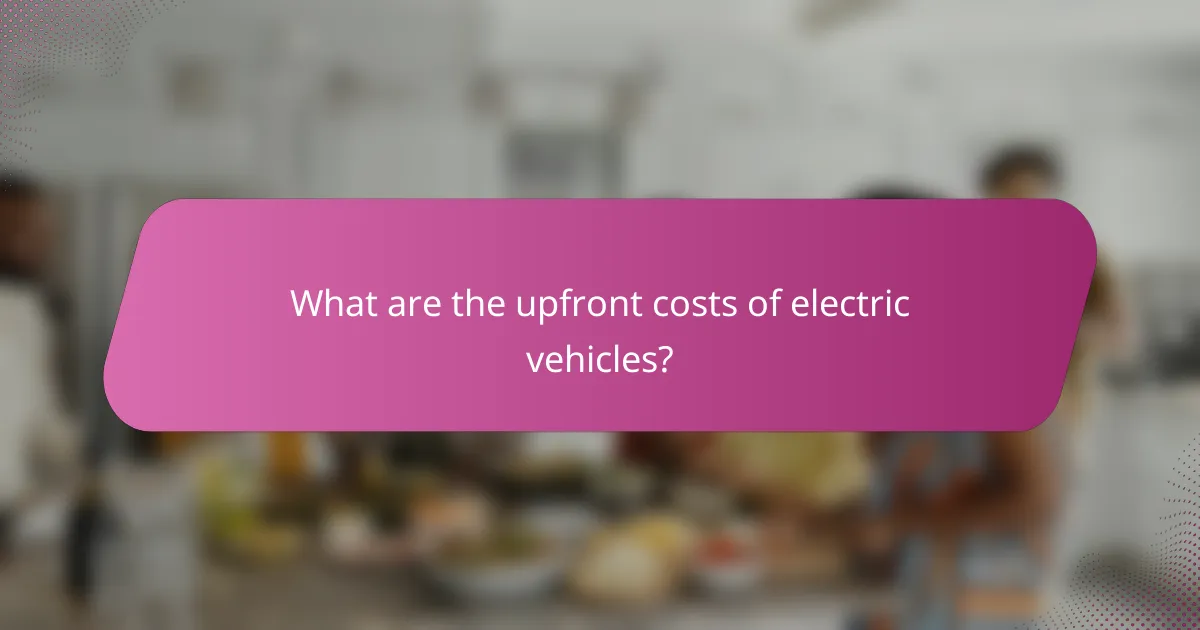
What are the upfront costs of electric vehicles?
The upfront costs of electric vehicles (EVs) typically include the purchase price, taxes, and any additional fees. While EVs can have higher initial prices compared to gasoline cars, various factors can influence the total cost, including incentives and financing options.
Average purchase price
The average purchase price of electric vehicles can vary significantly based on the model and features. As of recent data, prices generally range from around $30,000 to over $60,000 in the United States. Luxury models can exceed these figures, while more affordable options may be available in the lower price range.
It’s important to consider state and federal incentives that can lower the effective purchase price. For example, in the U.S., federal tax credits can provide savings of up to $7,500, depending on the vehicle’s battery capacity and the manufacturer’s sales volume.
Financing options available
Financing options for electric vehicles are similar to those for traditional gasoline cars. Buyers can choose from loans, leases, or financing through dealerships. Many banks and credit unions offer competitive rates for EV financing, often with terms ranging from three to seven years.
Additionally, some manufacturers provide special financing deals or incentives for EV buyers, which can include lower interest rates or deferred payments. It’s advisable to shop around and compare offers to find the best financing solution that fits your budget.

What factors influence electric vehicle savings?
Several factors significantly impact the long-term savings of electric vehicles (EVs), including electricity rates, driving habits, and overall mileage. Understanding these elements can help potential EV owners estimate their financial benefits compared to gasoline cars.
Electricity rates in urban areas
Electricity rates vary widely across urban areas, affecting the cost of charging an electric vehicle. In regions with lower electricity costs, EV owners can save substantially on fuel expenses compared to gasoline prices, which tend to be higher and fluctuate more frequently.
For example, if the average electricity rate is around $0.10 to $0.15 per kWh, charging an EV can cost significantly less than filling up a gasoline car. Conversely, in areas where electricity is more expensive, the savings may diminish, making it crucial to compare local rates before making a decision.
Driving habits and mileage
Your driving habits and total mileage play a crucial role in determining savings from an electric vehicle. If you drive long distances regularly, the savings from lower fueling costs can accumulate quickly. However, for those with minimal driving needs, the financial benefits may be less pronounced.
Additionally, frequent short trips can maximize the efficiency of EVs, as they tend to perform better in stop-and-go traffic compared to gasoline vehicles. Evaluating your typical driving patterns can help you assess whether an EV aligns with your lifestyle and budget.
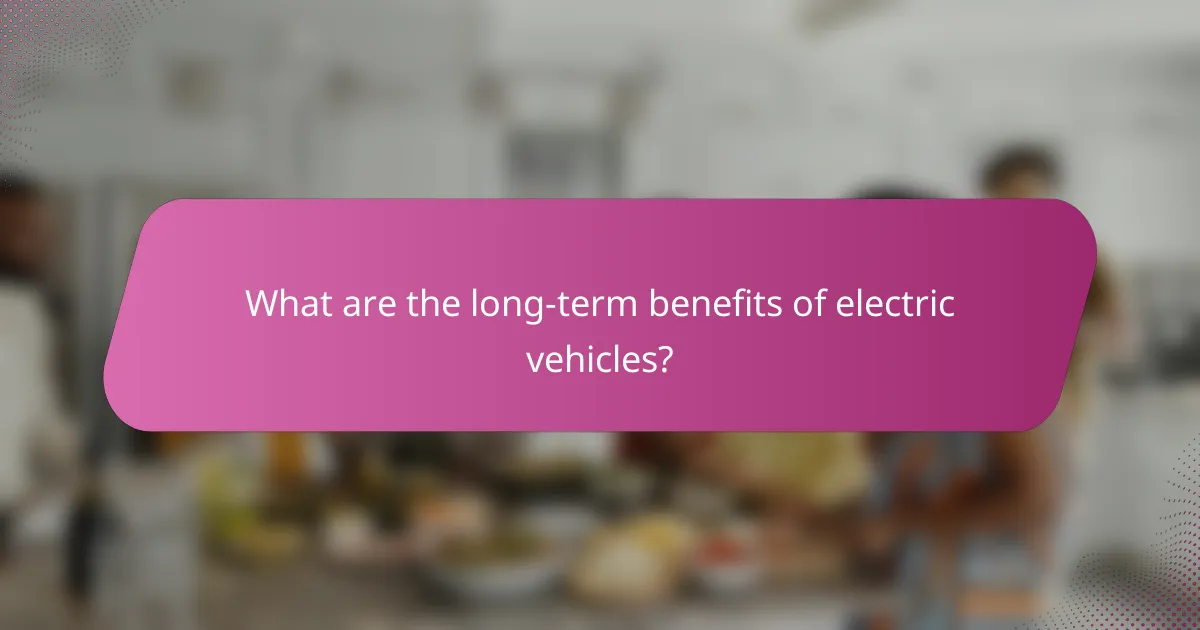
What are the long-term benefits of electric vehicles?
The long-term benefits of electric vehicles (EVs) include significant savings on fuel and maintenance costs, as well as potential incentives from governments. Over time, these advantages can outweigh the initial purchase price, making EVs a financially sound choice for many drivers.
Increased resale value
Electric vehicles tend to have a higher resale value compared to traditional gasoline cars. This is largely due to the growing demand for eco-friendly vehicles and advancements in battery technology, which enhance their longevity and performance.
Factors influencing resale value include the brand reputation, model popularity, and battery life. For instance, well-known EV brands often retain their value better, making them a more attractive option for future buyers.
Technological advancements
Electric vehicles benefit from rapid technological advancements that improve efficiency, range, and charging speed. Innovations such as solid-state batteries and enhanced regenerative braking systems are becoming more common, leading to better performance and lower operating costs.
As technology evolves, EVs are likely to incorporate features like advanced driver-assistance systems and improved connectivity. These enhancements not only make driving more enjoyable but also contribute to safety and convenience, further solidifying the appeal of electric vehicles in the long run.
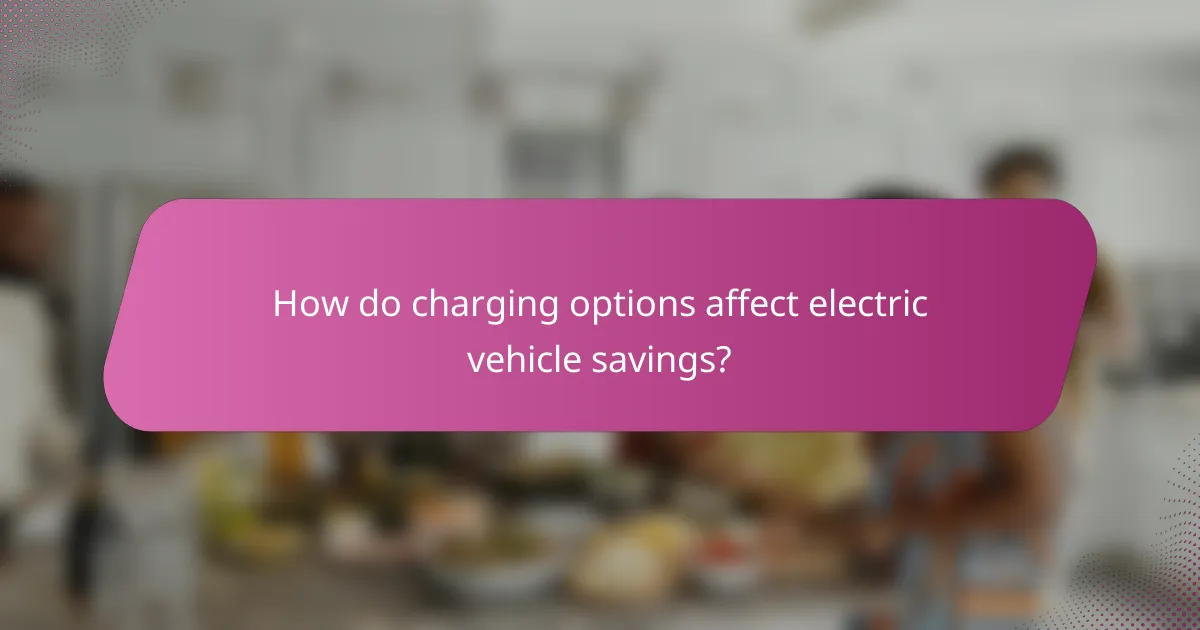
How do charging options affect electric vehicle savings?
Charging options significantly impact the long-term savings of electric vehicles (EVs). Home charging can reduce costs compared to public charging, while the availability of charging stations influences convenience and overall expenses.
Home charging installation costs
Installing a home charging station typically involves upfront costs, including the purchase of the charger and potential electrical upgrades. Depending on the complexity, installation costs can range from a few hundred to several thousand USD.
Consider the long-term savings from home charging, as electricity rates are generally lower than gasoline prices. Additionally, some utility companies offer incentives or rebates for installing EV chargers, which can help offset initial expenses.
Public charging station availability
The availability of public charging stations can vary widely by region, affecting the convenience and cost of charging on the go. Areas with dense charging networks may provide more options for fast charging, reducing downtime and enhancing the overall EV experience.
When using public chargers, be aware of the pricing structures, as some stations charge per minute or per kilowatt-hour. It’s beneficial to plan routes around charging station locations and consider membership programs that can offer discounts on charging fees.
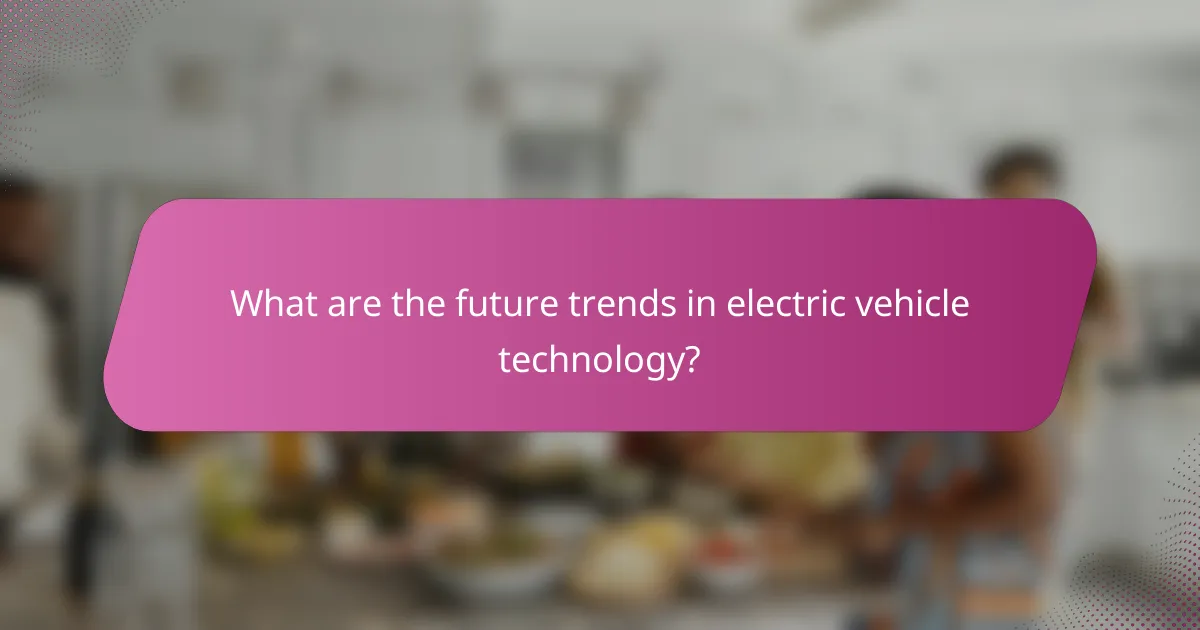
What are the future trends in electric vehicle technology?
Future trends in electric vehicle (EV) technology focus on advancements in battery efficiency, charging infrastructure, and autonomous driving capabilities. These innovations aim to enhance the overall user experience while reducing costs and environmental impact.
Battery Technology Innovations
Battery technology is central to the evolution of electric vehicles. Innovations such as solid-state batteries promise higher energy density, faster charging times, and improved safety compared to traditional lithium-ion batteries. As manufacturers invest in research, we may see battery ranges increase significantly, potentially exceeding 500 kilometers on a single charge.
Additionally, recycling and second-life applications for batteries are gaining traction, which can lower costs and reduce waste. This shift not only supports sustainability but also addresses concerns about resource scarcity.
Charging Infrastructure Development
The expansion of charging infrastructure is crucial for the widespread adoption of electric vehicles. Governments and private companies are working to increase the number of fast-charging stations, making it easier for users to charge their vehicles on the go. In urban areas, charging points are becoming more common, often integrated into parking lots and public spaces.
Moreover, advancements in charging technology, such as ultra-fast chargers, can reduce charging times to under 30 minutes, making EVs more convenient for everyday use. Home charging solutions are also improving, with smart chargers that optimize energy use based on grid demand and user habits.
Autonomous Driving Features
Autonomous driving technology is increasingly being integrated into electric vehicles, enhancing safety and convenience. Many new EV models now come equipped with advanced driver-assistance systems (ADAS) that support features like lane-keeping, adaptive cruise control, and automated parking.
As regulations evolve, the potential for fully autonomous vehicles is becoming more realistic. This shift could transform urban mobility, reduce traffic congestion, and lower accident rates, making electric vehicles even more appealing to consumers.
